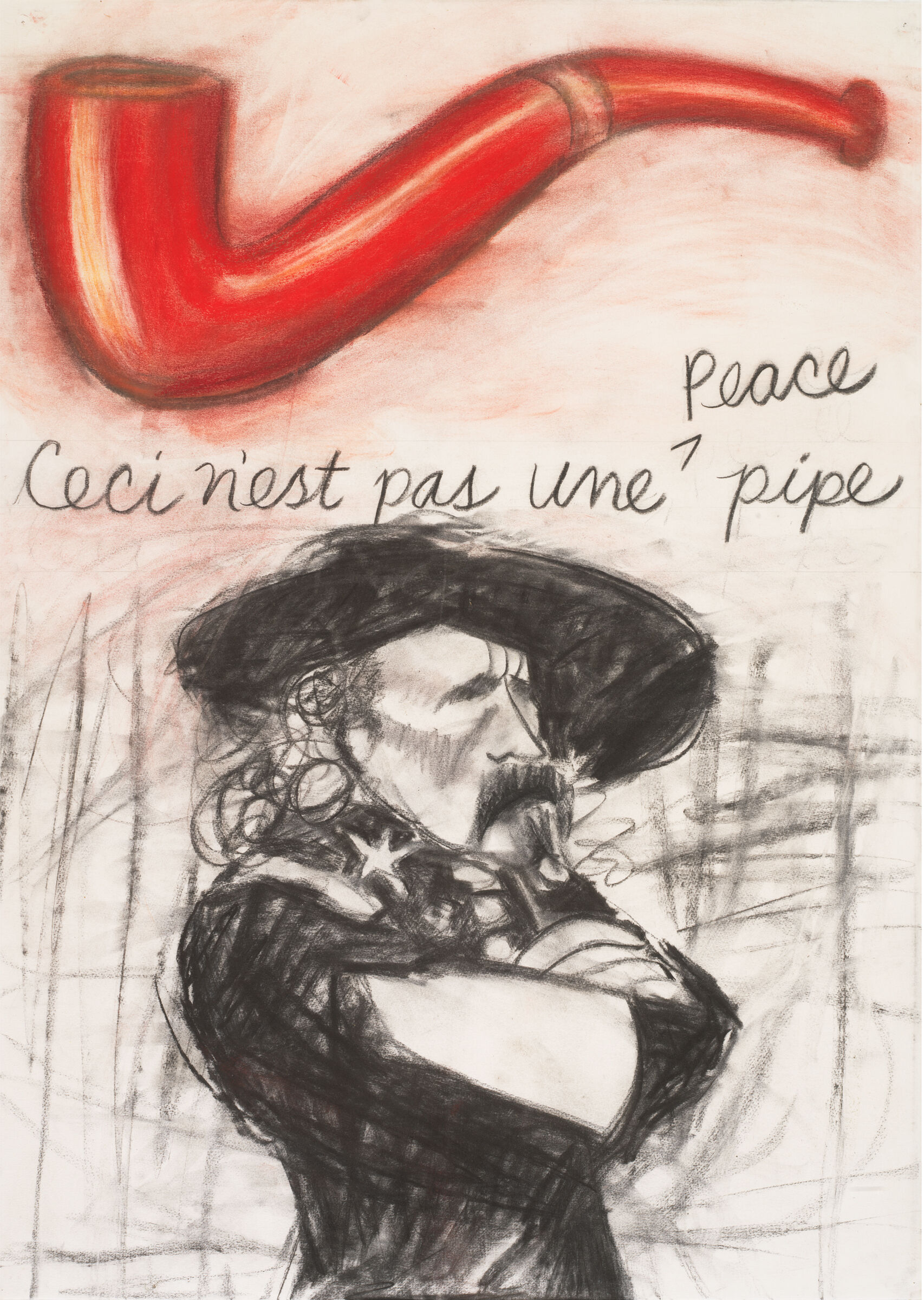Jaune Quick-to-See Smith: Memory Map | Art & Artists
Apr 19–Aug 13, 2023
Jaune Quick-to-See Smith: Memory Map | Art & Artists
War is Heck
4
The consequences of US-led invasions—of Indigenous lands on this continent and other sovereign nations abroad—are visible themes in Smith’s work across the decades. A 1993 series of prints and drawings co-opts a well-known image of George Armstrong Custer, the United States Army general notorious for his deadly campaigns against Lakota, Arapaho, and Northern Cheyenne people during the late 1860s, and for his defeat and death at the Battle of Little Bighorn in Montana in 1876. Custer’s widow successfully cultivated his mythic reputation as a military hero, a distorted view transmitted through American popular culture by widely circulated photographs and illustrations of him. Smith introduces an element of humor to Custer’s image, ridiculing his renown and underscoring the inaccuracies of recorded history.
In the early 2000s, Smith’s outrage over the invasion of Iraq and the post-9/11 policies of George W. Bush prompted her to address the imperialist violence perpetrated by the United States outside of North America. Her paintings and prints convey her visceral reaction to the horrors of war, often by employing art historical references such as Picasso’s Guernica (1937), images of Sumerian artifacts looted from the Iraq Museum in Baghdad, and political cartoons by José Guadalupe Posada. Smith also highlights how objects and sites of cultural heritage are often targeted and weaponized in wars, and joins a long line of artists who have condemned such conflicts in their work.

